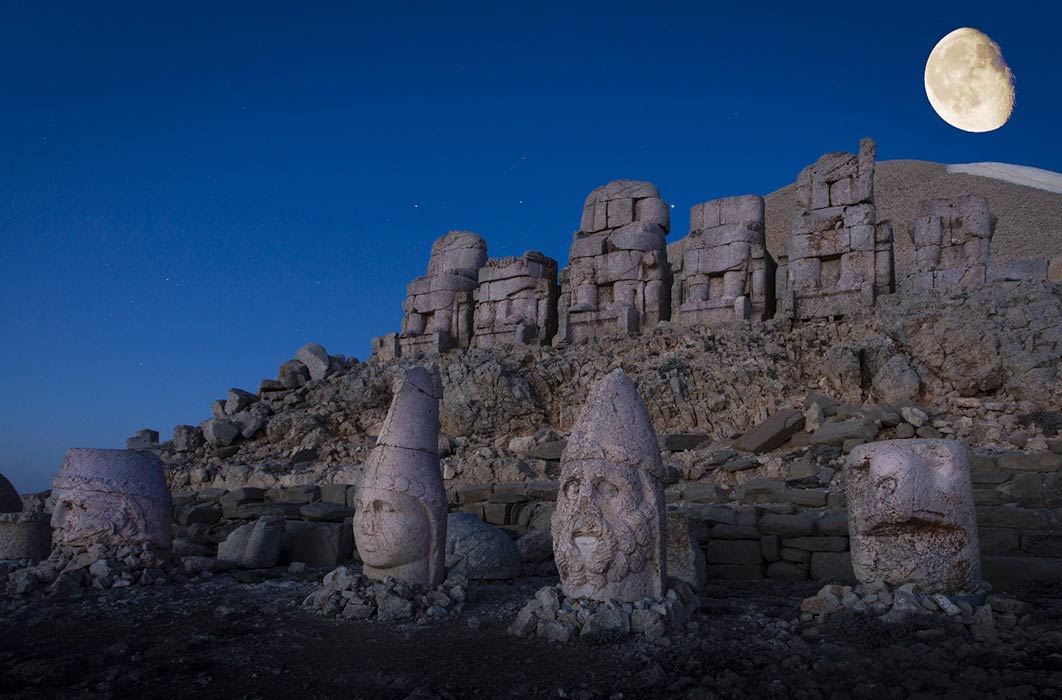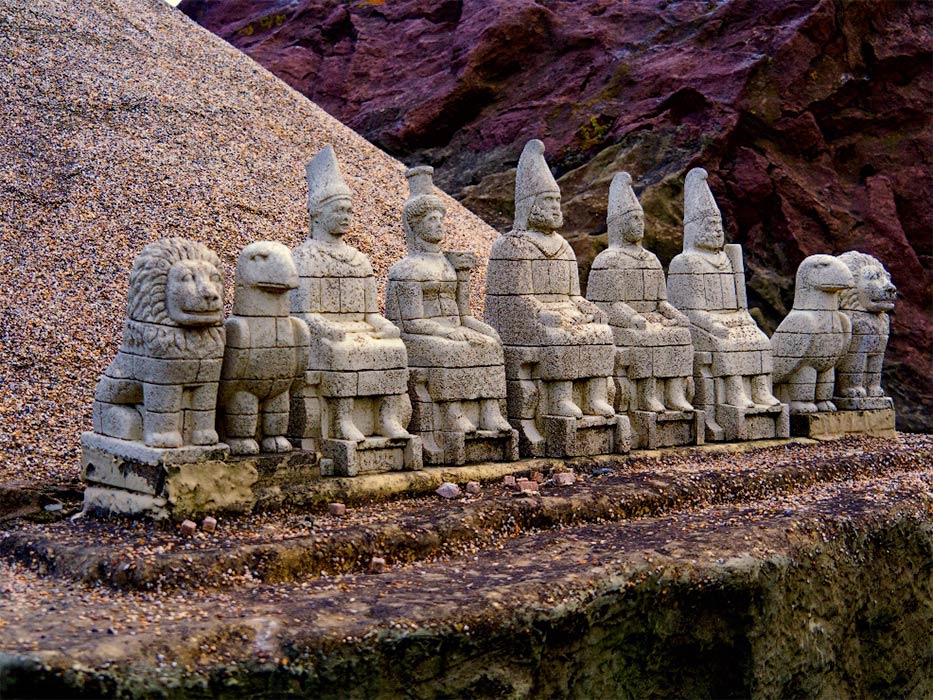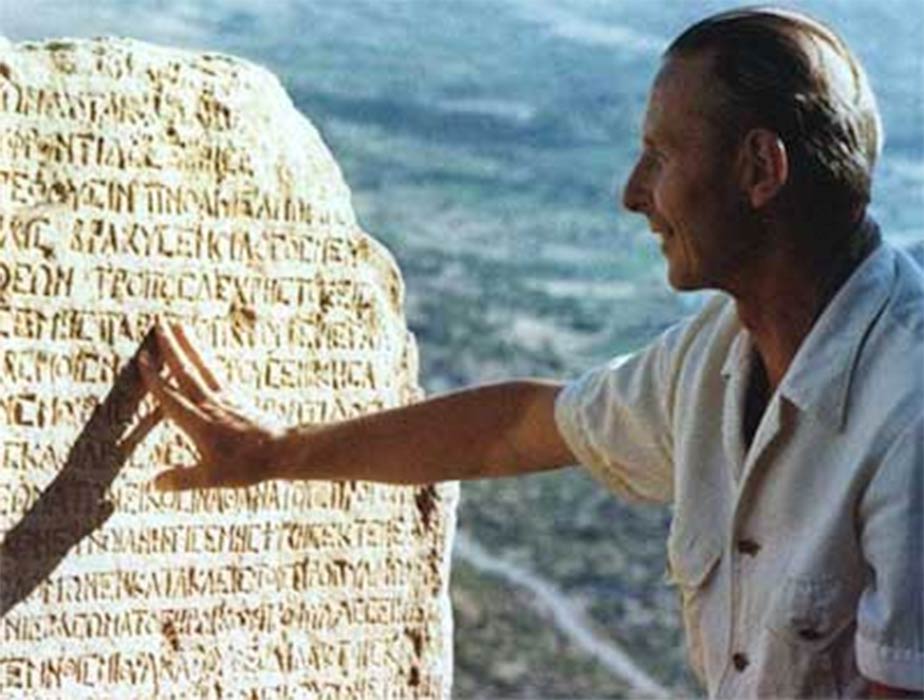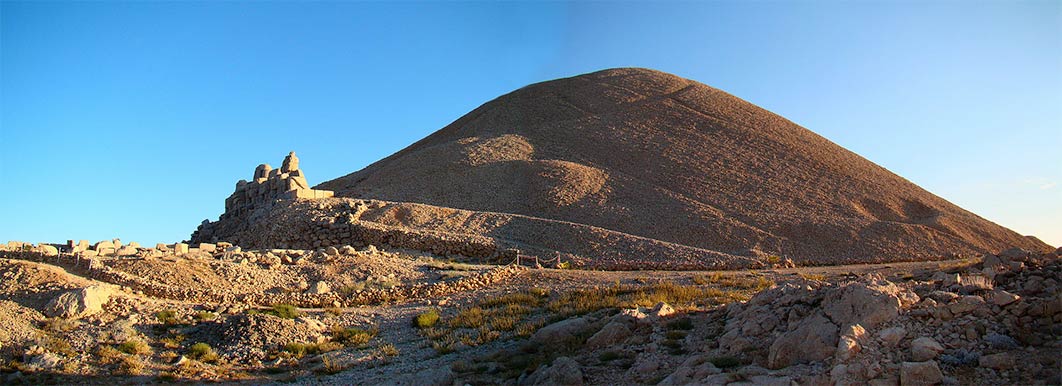
Mount Nemrut Magnificent Monument To Megalomania
In 1881, a German engineer by the name of Karl Sester was surveying transport routes through what was then the Ottoman Empire. Some local people who lived in the area and worked for him shared some interesting news which he subsequently reported. Although they could not identify the specific ancient routes he was looking for, they told him about some monumental statues that lay in ruins on Mount Nemrut or Nemrut Dag. Motivated more by his own curiosity than professional goals, he hired a Kurdish man named Bâko to show him the site.

Representation of what the Nemrut pantheon looked like before the heads fell off. ( CiddiBiri/ Adobe Stock)
His reports were met with such interest that the very next year the German Archaeological Institute formed a scientific expedition to investigate. Otto Puchstein was working in Egypt at the time but was instructed to meet with Sester to do some preliminary work. What he found was so intriguing that he returned with archaeologist Osman Hamdi and sculptor Osgan Effendi. Much of what is known today about the history of this important site is due to the work of these adventurers. Sester and Puchstein discovered a long inscription written in Greek, which told the story about why the monuments had been erected. By 1883 it was published in a book written in French called Le Tumulus de Nemroud Dagh. Although no serious archaeological work had yet been done on site, the story caught on, and the public at large began to hear about the hierothesion, an ancient Greek word meaning ‘holy seat’, on Mount Nemrut.

Friedrich Karl Dörner. (CC BY-SA 3.0)
Enter Theresa Goell and Friedrich Dörner
Once the story became known, history seemed to intervene. It was not until after the Second World War that Friedrich Karl Dörner could get about the business of revealing the secrets of the mountain, which involved the search for a hidden burial chamber and various historical facts that revealed the politics behind this extraordinary era. Although Dörner is usually credited with putting together the details of the site, it is really because of the work of Theresa Goell, sometimes called the ‘Queen of the Mountain’, that one gains insight into what transpired in this important region of the world. Her biography tells the story of how a 40-year-old divorcee was able, at tremendous personal cost, to break into the male-dominated world of archaeology, especially in the Middle East. She believed that the mountain was, in her words, ‘too oriental’ for the classically trained archaeologists of her day. They were much more interested in studying the ancient civilizations of Greece and Rome. At the same time, the ‘orientalists’ of Asia considered the site ‘too classical’, meaning too European. So, she devoted the rest of her life to uncovering the fascinating story Mount Nemrut had to tell, including her search for the burial chamber of King Antiochus, a monumental megalomaniac if there ever was one.

The artificial, man-made peak of Mount Nemrut with the eastern row of gods.( Bjørn Christian Tørrissen /CC BY-SA 3.0)
During the 1950s, two archaeological teams were at work simultaneously. One was directed by Dörner, the other by Goell. Their agreement was that Goell would work at the summit of the mountain, using Dörner as an expert of ancient epigraphy, or inscriptions. Dörner, when not otherwise engaged, would conduct excavations at the foot, and utilize Goell as an assistant. In this way, the two would collaborate from 1953 to 1956, and then come together for a final season in 1959.




